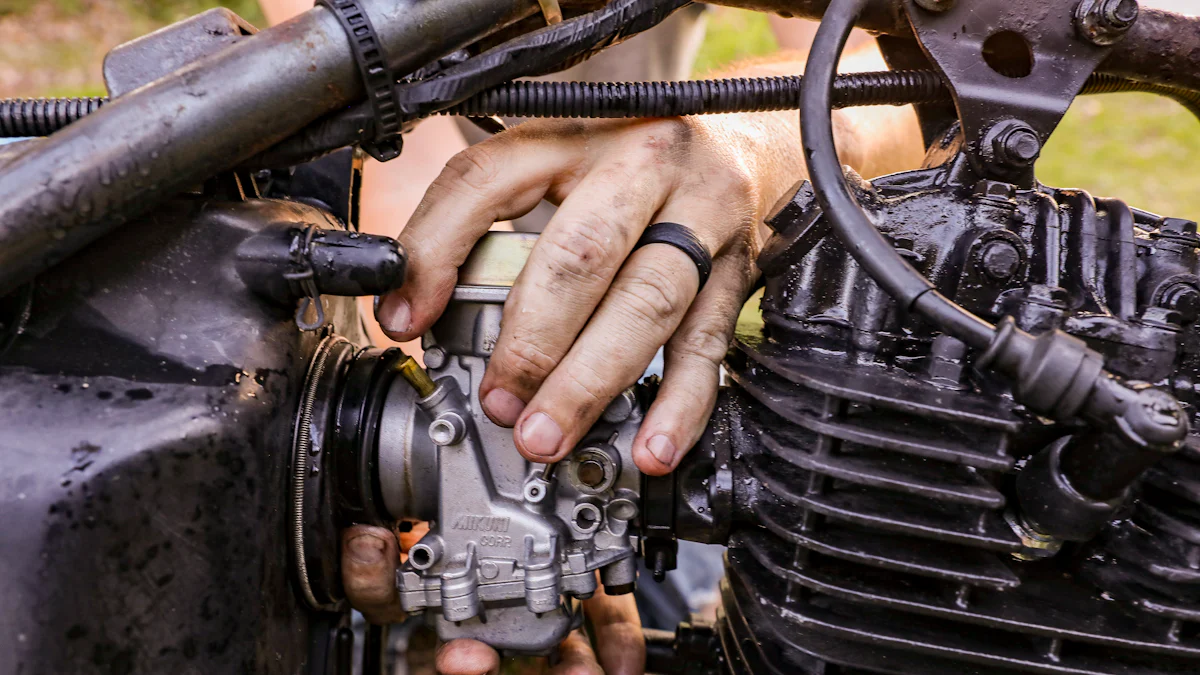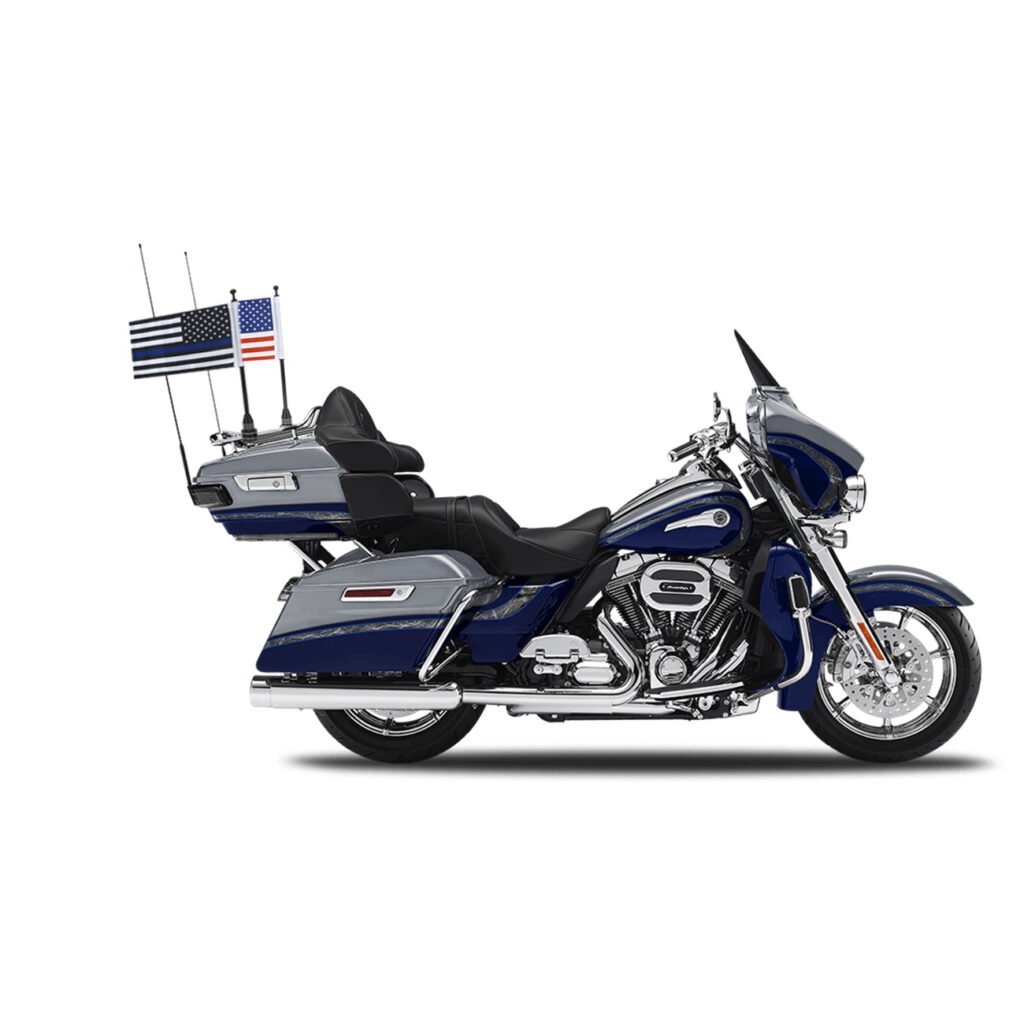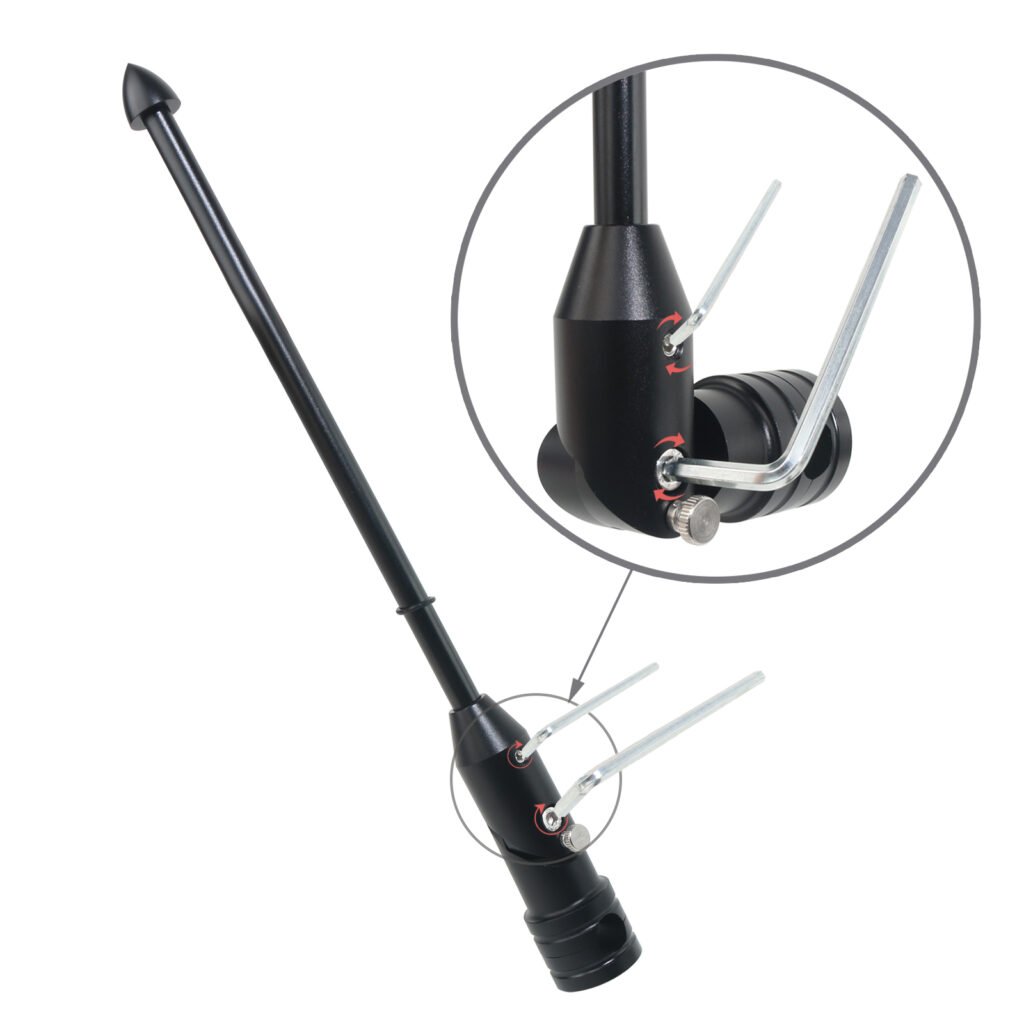
Maintaining the Harley Davidson clutch system is essential for your motorcycle’s safety, performance, and longevity. To maintain the Harley Davidson properly, a well-maintained clutch ensures smooth gear shifts, giving you better control and a more responsive ride. Neglecting this critical component can lead to unpredictable acceleration, jerky gear changes, and even safety hazards on the road. Regular maintenance not only prevents these issues but also extends the lifespan of your bike’s drivetrain. By taking proactive steps to care for your clutch, you enhance your riding experience and keep your Harley running at its best.
Key Takeaways
Regularly inspect your Harley Davidson clutch system to catch wear and tear early, preventing costly repairs and ensuring safety.
Maintain proper lubrication and fluid levels in your clutch system to enhance responsiveness and prolong its lifespan.
Replace worn-out components like clutch plates and springs promptly to avoid performance issues such as slipping or difficulty shifting gears.
Adjust your clutch every 6,000 miles to ensure smooth engagement and prevent unnecessary wear on drivetrain components.
Adopt smooth riding habits and avoid aggressive acceleration to extend the life of your clutch system.
Utilize genuine Harley-Davidson parts and recommended products for maintenance to ensure compatibility and reliability.
Follow proper break-in techniques for new clutch plates to maximize performance and longevity.
Overview of the Harley-Davidson Clutch System
The clutch system in your Harley-Davidson motorcycle plays a critical role in transferring power from the engine to the transmission. This process allows you to control the bike’s speed and acceleration effectively. A well-functioning clutch ensures smooth gear transitions, making your ride more enjoyable and responsive. Understanding the components and operation of this system will help you maintain it properly and avoid potential issues.
Key Components of the Clutch System
The Harley-Davidson clutch system consists of several essential parts that work together to deliver power efficiently. Each component has a specific function, and keeping them in good condition is vital for optimal performance. Here are the key components:
Clutch Plates: These plates engage and disengage to transfer power from the engine to the transmission. Over time, they can wear out and require replacement.
Pressure Plate: This part applies pressure to the clutch plates, ensuring they stay engaged when needed. It plays a significant role in torque handling.
Clutch Springs: These springs maintain the necessary tension in the system. They ensure the clutch plates engage and disengage smoothly.
Clutch Cable or Hydraulic System: Depending on your Harley model, the clutch system may use a cable or hydraulic mechanism to operate. Proper lubrication or fluid maintenance is crucial for smooth operation.
Clutch Lever: This is the part you interact with directly. It allows you to control the engagement and disengagement of the clutch.
Harley-Davidson offers specialized products like the Screamin’ Eagle Performance Clutch Kits, which enhance the torque-handling capacity of your clutch. These kits are particularly beneficial for high-performance models like the Harley V-Twin, ensuring they deliver maximum power and reliability.
How the Clutch System Works
The Harley-Davidson clutch system operates through a straightforward yet efficient mechanism. When you pull the clutch lever, the system disengages the clutch plates. This action interrupts the power flow from the engine to the transmission, allowing you to shift gears smoothly. Releasing the lever re-engages the plates, restoring the power flow and enabling the bike to move forward.
In a v-twin engine, the clutch system must handle significant torque due to the engine’s high-performance nature. The Harley V-Twin clutch system is designed to manage this power effectively, ensuring a seamless riding experience. Regular maintenance, such as adjusting the clutch and inspecting the components, keeps this system functioning at its best.
By understanding these components and their functions, you can appreciate the importance of maintaining your Harley-Davidson clutch. Proper care ensures your bike delivers the performance and reliability you expect from a v-twin engine.
Step-by-Step Guide to Maintain the Harley Davidson Clutch System

Inspecting the Clutch System
Regular inspection is the foundation of proper clutch maintenance. Begin by examining the clutch lever and cable or hydraulic system. Check for any signs of wear, such as frayed cables or fluid leaks. If your Harley V-Twin uses a hydraulic clutch, ensure the fluid level in the master cylinder reservoir reaches the FILL mark. The fluid should appear light yellow. Replace it immediately if it looks brown or dirty.
Inspect the clutch discs for wear or damage. Worn-out clutch discs can lead to slipping, which reduces power transfer and affects performance. Look for uneven surfaces or discoloration on the discs. Pay attention to the clutch springs as well. Weak or damaged springs can cause engagement issues, making it harder to shift gears smoothly.
“Proper clutch adjustment and regular inspections prevent safety hazards and keep your bike in top condition,” says a seasoned Harley V-Twin rider and maintenance expert.
By conducting these checks, you can identify potential problems early and avoid costly repairs later.
Cleaning and Lubricating the Clutch
Cleaning and lubrication are essential steps to maintain the Harley Davidson clutch system. Start by removing any dirt or debris from the clutch lever and cable. Use a clean cloth and a mild cleaning solution to wipe down these components. For hydraulic systems, clean the master cylinder cap and surrounding area before opening it to prevent contaminants from entering the fluid.
Lubricate the clutch cable to ensure smooth operation. Use a high-quality lubricant specifically designed for motorcycle cables. Apply the lubricant by popping the clip with a small screwdriver and letting it flow through the cable housing. This process reduces friction and extends the lifespan of the cable.
For Harley V-Twin models with hydraulic clutches, focus on maintaining the fluid. Replace the hydraulic fluid every one to two years to ensure optimal performance. Proper lubrication and cleaning not only enhance the clutch’s responsiveness but also contribute to a safer and more enjoyable ride.
Replacing Worn-Out Parts
Replacing worn-out parts is a critical aspect of clutch maintenance. Over time, components like clutch discs, springs, and the pressure plate may wear out due to regular use. When inspecting the clutch discs, check for thinning or uneven wear. Replace them promptly to prevent slipping and ensure efficient power transfer.
The clutch springs play a vital role in maintaining tension within the system. Weak springs can lead to engagement issues, making it difficult to shift gears. Replace the springs if they show signs of fatigue or damage. Similarly, inspect the pressure plate for cracks or warping. A damaged pressure plate can compromise the clutch’s performance and should be replaced immediately.
According to a police motorcycle officer and instructor, “Proper clutch adjustment and timely replacement of worn parts accelerate the break-in process and ensure a smooth friction zone.”
When replacing parts, follow the manufacturer’s guidelines for installation. Using genuine Harley-Davidson components, such as Screamin’ Eagle Performance Clutch Kits, ensures compatibility and reliability. These kits are designed to handle the high torque of Harley V-Twin engines, providing maximum performance and durability.
By replacing worn-out parts as needed, you maintain the Harley Davidson clutch system’s efficiency and extend its lifespan.
Troubleshooting Common Harley-Davidson Clutch Issues
Identifying Symptoms of Clutch Problems
Recognizing early signs of clutch issues in your Harley V-Twin can save you from costly repairs and unsafe riding conditions. Pay close attention to how your motorcycle responds during rides. One common symptom is difficulty shifting gears. If you notice resistance or grinding noises when changing gears, the clutch system may need adjustment. Another red flag is clutch slipping, where the engine revs increase without a corresponding rise in speed. This often indicates worn-out clutch plates or improper clutch lever pressure.
A sticking clutch is another issue that riders frequently encounter. This happens when the clutch fails to disengage fully, making it hard to shift gears or stop the bike smoothly. Common causes include improperly adjusted clutch controls or a collapsing clutch cable. Additionally, if you feel inconsistent clutch lever pressure, it could signal problems with the hydraulic system or cable tension. Always monitor these symptoms closely to ensure your Harley V-Twin operates safely and efficiently.
“Gear slippage and loss of traction are major concerns for riders. These issues often stem from an improperly adjusted clutch,” says a seasoned Harley mechanic. Addressing these symptoms promptly can prevent accidents and maintain your bike’s performance.
Diagnosing and Resolving Issues
Once you identify potential clutch problems, diagnosing the root cause becomes essential. Start by inspecting the clutch lever pressure. For Harley V-Twin models with hydraulic systems, check the fluid level in the master cylinder reservoir. The fluid should appear light yellow. If it looks brown or dirty, replace it immediately. For cable-operated systems, examine the cable for fraying or damage. A collapsing clutch cable can lead to inconsistent performance and requires immediate replacement.
Next, assess the clutch adjustment. An improperly adjusted clutch can cause acceleration issues and gear slippage. To adjust the clutch on your Harley V-Twin, locate the adjustment screw near the clutch lever. Turn the screw to achieve the recommended free play, ensuring smooth engagement and disengagement. Proper adjustment not only resolves performance issues but also enhances the lifespan of your clutch components.
Inspect the clutch plates and springs for wear or damage. Worn-out plates often result in clutch slipping, while weak springs can cause engagement problems. Replace these parts as needed, following the manufacturer’s guidelines. Using genuine Harley-Davidson components ensures compatibility and reliability, especially for high-performance models like the Harley V-Twin.
According to a Harley V-Twin enthusiast, “Adjusting the clutch properly can drastically improve acceleration and overall performance.” Regular maintenance and timely adjustments keep your bike running at its best.
By addressing these issues systematically, you can restore your Harley V-Twin’s clutch system to optimal condition. Regular inspections and adjustments prevent recurring problems and ensure a safer, smoother ride.
Motorcycle Clutch Adjustment: How to Adjust Clutch on a Harley Davidson

Proper motorcycle clutch adjustment is essential for maintaining the performance and safety of your Harley V-Twin. A well-adjusted clutch ensures smooth gear shifts, prevents unnecessary wear on drivetrain components, and enhances your control during rides. Whether you’re navigating sharp corners or cruising on open roads, understanding how to adjust clutch settings can make a significant difference in your riding experience.
Tools Required for Clutch Adjustment
Before starting the clutch adjustment process, gather the necessary tools. Having the right equipment ensures accuracy and prevents damage to your Harley V-Twin’s components. Here’s what you’ll need:
Wrenches: A set of open-end or box wrenches, typically in sizes 10mm to 14mm, depending on your Harley model.
Screwdrivers: Both flathead and Phillips screwdrivers for accessing and adjusting components.
Allen Keys: These are often required for loosening bolts on Harley V-Twin models.
Lubricant: High-quality lubricant for the clutch cable adjustment, ensuring smooth operation.
Torque Wrench: To tighten bolts to the manufacturer’s specifications.
Shop Rag: For cleaning components and wiping away debris.
Having these tools ready will streamline the process and help you achieve proper clutch adjustment efficiently.
Step-by-Step Clutch Adjustment Process
Follow these steps to perform a motorcycle clutch adjustment on your Harley V-Twin. This process ensures optimal performance and extends the lifespan of your clutch system.
Locate the Adjustment Points
Begin by identifying the clutch adjustment points. For cable-operated systems, locate the adjuster near the clutch lever and the midpoint of the cable. For hydraulic systems, focus on the master cylinder and fluid levels.Check the Free Play
Measure the free play in the clutch lever. Free play refers to the amount of movement in the lever before the clutch engages. For Harley V-Twin models, the recommended free play is usually between 1/16 and 1/8 inch. Adjusting this ensures smooth engagement and prevents slipping.Adjust the Clutch Cable
For cable-operated systems, loosen the locknut on the adjuster. Turn the adjuster screw to increase or decrease the tension in the cable. Aim for the recommended free play. Once adjusted, tighten the locknut to secure the setting. This step is crucial for proper clutch cable adjustment.Inspect the Hydraulic System
If your Harley V-Twin uses a hydraulic clutch, check the fluid level in the master cylinder reservoir. Ensure the fluid reaches the FILL mark and appears light yellow. Replace it if it looks brown or dirty. Proper fluid levels are vital for maintaining consistent clutch pressure.Test the Clutch Lever
Pull the clutch lever several times to test the adjustment. The lever should feel smooth and responsive. If it feels too tight or loose, repeat the adjustment process until you achieve the desired result.Secure All Components
Tighten all bolts and screws to the manufacturer’s specifications using a torque wrench. Ensure no parts are loose, as this can affect the clutch’s performance.Perform a Test Ride
Take your Harley V-Twin for a short ride to evaluate the adjustment. Pay attention to gear shifts and overall responsiveness. If you notice any issues, revisit the adjustment points and make necessary corrections.
“Proper clutch adjustment not only improves performance but also enhances safety during rides,” says a Harley V-Twin maintenance expert.
By following this clutch adjustment process, you can maintain the efficiency and reliability of your Harley V-Twin. Regular adjustments prevent common issues like gear slippage and inconsistent shifts, ensuring a smoother and safer ride.
Tips for Optimizing Harley-Davidson Clutch Performance
Proper Break-In Techniques for New Clutch Plates
Breaking in new clutch plates correctly ensures optimal performance and longevity. When you install new clutch plates in your Harley V-Twin, avoid aggressive riding during the initial break-in period. Start with gentle acceleration and smooth gear shifts. This allows the clutch plates to seat properly and establish even contact surfaces.
Ride your Harley V-Twin at moderate speeds for the first 500 miles. Avoid rapid gear changes or high RPMs during this time. Gradual engagement of the clutch helps prevent overheating and reduces wear on the friction plates. Following this method ensures the clutch system adapts to the unique torque demands of your Harley V-Twin engine.
“A proper break-in process enhances the lifespan of clutch components and ensures consistent performance,” says a Harley maintenance expert.
By adhering to these techniques, you can maximize the efficiency of your new clutch plates and enjoy a smoother ride.
Recommended Products for Clutch Maintenance
Using the right products simplifies clutch maintenance and improves performance. Harley-Davidson offers specialized solutions designed for the unique needs of Harley V-Twin motorcycles. These products ensure your clutch system operates smoothly and reliably.
Lubricants for Clutch Maintenance: Formulated for primary chains and wet clutches, these lubricants prevent slipping and chatter. They ensure consistent engagement and reduce friction, which is essential for maintaining the performance of your Harley V-Twin.
Cleaning Agents for Clutch Maintenance: High-performance cleaning agents remove dirt and debris from clutch components. Keeping the clutch system clean prevents wear and ensures smooth operation.
Screamin’ Eagle Performance Clutch Kits: These kits include enhanced friction plates or additional plates to increase surface area and torque capacity. Slip-assisting clutch kits reduce drivetrain shock during rapid gear shifts, making them ideal for high-performance Harley V-Twin models.
Incorporating these products into your maintenance routine ensures your Harley V-Twin clutch system remains in peak condition. Regular use of high-quality products minimizes wear and extends the lifespan of clutch components.
Riding Habits to Extend Clutch Lifespan
Your riding habits significantly impact the lifespan of your Harley V-Twin clutch system. Adopting proper techniques reduces wear and ensures consistent performance. Avoid holding the clutch lever halfway while riding. This practice, known as “riding the clutch,” increases friction and accelerates wear on the clutch plates.
Shift gears smoothly and avoid abrupt engagement or disengagement of the clutch. Aggressive riding, such as rapid acceleration or frequent high-speed gear changes, places unnecessary strain on the clutch system. Instead, maintain steady speeds and use the clutch lever gently to prolong its lifespan.
Regularly inspect and adjust the clutch system to ensure optimal performance. Proper adjustment prevents slipping and reduces stress on the drivetrain. Routine maintenance, combined with mindful riding habits, keeps your Harley V-Twin clutch system functioning efficiently.
“Good riding habits and regular adjustments are key to extending the life of your Harley V-Twin clutch,” advises a seasoned rider.
By following these tips, you can optimize the performance of your Harley V-Twin clutch system and enjoy a safer, more responsive ride.
The Importance of Regular Clutch Maintenance
Regular clutch maintenance plays a vital role in ensuring your Harley V-Twin operates at peak performance. By dedicating time to inspect and adjust the clutch system, you can prevent potential issues and enjoy a smoother, safer ride. Neglecting this essential task can lead to reduced efficiency, increased wear, and costly repairs. Understanding the benefits of routine care and knowing how often to perform it will help you maintain the Harley Davidson effectively.
Benefits of Routine Inspections and Adjustments
Routine inspections and adjustments provide several advantages for your Harley V-Twin. These practices ensure that the clutch system functions efficiently and prolongs its lifespan. Here are the key benefits:
Improved Gear Engagement: Proper adjustment ensures the clutch engages smoothly, allowing the engine to deliver power efficiently. This results in better performance and a more responsive ride.
Enhanced Safety: Regular inspections help you identify potential issues, such as worn-out clutch plates or low hydraulic fluid levels, before they become safety hazards.
Prolonged Clutch Life: Smoother clutch action reduces unnecessary wear on components, extending the lifespan of your Harley V-Twin’s clutch system.
Cost Savings: Early detection of problems prevents expensive repairs and replacements. Routine maintenance minimizes the risk of major breakdowns.
“Proper clutch adjustment ensures gear engagement for greater efficiency,” says a Harley maintenance expert. By keeping the clutch system in top condition, you enhance both performance and reliability.
Incorporating these inspections and adjustments into your routine helps you maintain the Harley Davidson and ensures a consistent riding experience.
How Often to Perform Clutch Maintenance
The frequency of clutch maintenance depends on your Harley V-Twin’s usage and riding conditions. Following a regular schedule ensures optimal performance and prevents unexpected issues. Here are some general guidelines:
Inspect the Clutch System Monthly
Check the clutch lever, cable, or hydraulic system for signs of wear or damage. Look for frayed cables, fluid leaks, or discoloration in the hydraulic fluid. Monthly inspections help you catch minor problems early.Adjust the Clutch Every 6,000 Miles
Perform a clutch adjustment every 6,000 miles to maintain proper tension and free play. This ensures smooth engagement and prevents slipping. For cable-operated systems, focus on the adjuster near the clutch lever. For hydraulic systems, verify the fluid level in the master cylinder reservoir.Replace Hydraulic Fluid Annually
If your Harley V-Twin uses a hydraulic clutch, replace the fluid every one to two years. Fresh fluid ensures consistent pressure and prevents contamination. Always use the recommended fluid type for your Harley model.Inspect and Replace Worn Parts as Needed
Regularly check the clutch plates, springs, and pressure plate for wear. Replace these components promptly to avoid performance issues. Using genuine Harley-Davidson parts ensures compatibility and reliability.
A seasoned Harley rider advises, “Routine maintenance and timely adjustments keep your Harley V-Twin running smoothly and safely.”
By following these intervals, you can maintain the Harley Davidson effectively and enjoy a trouble-free riding experience. Consistent care not only enhances performance but also extends the life of your bike’s clutch system.
Maintaining the Harley V-Twin clutch system requires consistent effort and attention. Regular inspections, timely adjustments, and replacing worn parts ensure your Harley V-Twin operates smoothly and safely. Proactive maintenance prevents issues like clutch slipping and enhances the performance of your Harley V-Twin. By prioritizing these steps, you extend the lifespan of your clutch and enjoy a responsive ride. A well-maintained Harley V-Twin clutch system not only delivers power efficiently but also ensures control and reliability on every journey. Make clutch maintenance a routine to keep your Harley V-Twin at its best.
FAQ
How often should I adjust the Harley V-Twin motorcycle clutch?
You should adjust your Harley V-Twin motorcycle clutch every 6,000 miles. This interval ensures optimal performance and prevents unnecessary wear. Always refer to your owner’s manual for specific instructions tailored to your Harley model.
What are the signs of a slipping clutch?
A slipping clutch often reveals itself through increased engine revs without a corresponding rise in speed. You may also notice difficulty accelerating or a burning smell during rides. These symptoms indicate worn-out clutch plates or improper adjustment.
How do I know if my clutch fluid needs replacement?
Inspect the clutch fluid in the master cylinder reservoir. The fluid should appear light yellow. If it looks brown or dirty, replace it immediately. Regularly changing the fluid every one to two years keeps the hydraulic system functioning smoothly.
Can I clean the clutch system myself?
Yes, you can clean the clutch system with basic tools and cleaning agents. Wipe down the clutch lever and cable with a clean cloth and mild solution. For hydraulic systems, clean the master cylinder cap before opening it to avoid contamination. Always follow proper safety precautions.
What tools do I need for clutch maintenance?
For clutch maintenance, you’ll need wrenches, screwdrivers, Allen keys, a torque wrench, lubricant, and a shop rag. These tools help you inspect, adjust, and maintain the clutch system effectively.
How long does a Harley V-Twin clutch typically last?
A Harley V-Twin clutch can last between 20,000 to 60,000 miles. The lifespan depends on your riding habits and maintenance routine. Regular inspections and timely adjustments significantly extend its durability.
Why is my clutch lever hard to pull?
A hard-to-pull clutch lever may result from a lack of lubrication in the clutch cable or low hydraulic fluid levels. Inspect the cable for fraying or damage. For hydraulic systems, check the fluid level and replace it if necessary.
What happens if I don’t maintain my clutch?
Neglecting clutch maintenance can lead to gear slippage, difficulty shifting, and reduced performance. Over time, this can cause significant wear on the drivetrain and increase the risk of safety hazards during rides.
Can I use aftermarket parts for clutch replacement?
While aftermarket parts may seem cost-effective, using genuine Harley-Davidson components ensures compatibility and reliability. Products like Screamin’ Eagle Performance Clutch Kits are specifically designed for Harley V-Twin models, offering enhanced performance and durability.
How can I extend the lifespan of my clutch?
Adopt smooth riding habits, avoid aggressive acceleration, and refrain from riding the clutch lever. Regularly inspect and adjust the clutch system. Replace worn-out parts promptly and use high-quality lubricants and fluids to maintain optimal performance.


